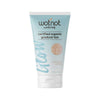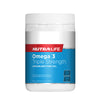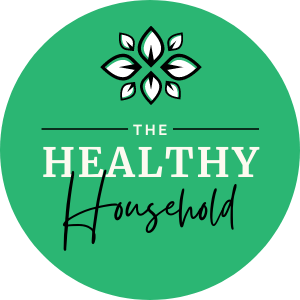Health and Nutrition:
A variety of health problems have been blamed on saturated fats and oils. Most of these conditions can be attributed to an unhealthy lifestyle with excess dietary intake of saturated fats. Health specialists recommend that fat consumption be limited to no more than 30 percent of the total calorie intake. However, fats are not only a source of energy, but also the source of two unsaturated oils Omega 3 & 6, so called essential fatty acids. They need to be included in the diet because they cannot be produced by the human body. Omega 3 can be converted in the body into Omega 9. The only other source of Omega 9 can be found in "fresh" mothers milk.
A perfect balance of Omega 6 to Omega 3 for the human body is a ratio of 4 to 1, this perfect balance is only found in good quantities in Sani Hemp Hemp Seed Oil.
Essential Fatty Acids:
Linoleic Acid and Alpha-Linolenic Acid are the two Essential Fatty Acids necessary for growth, maintenance of cell membranes, and as precursors to a variety of physiologically active regulators, such as prostaglandins. Linoleic acid is a double unsaturated fatty acid common in plants: Evening primrose oil contains up to 80% of its total fatty acid content as linoleic acid. Unrefined sun flower oil contains up to 65%, Cold Pressed Sani Hemp Oil up to 60%, soybean oil up to 55%, and flax oil up to 26% linoleic acid. The human body synthesizes another important fatty acid from linoleic acid: gamma-linolenic acid (GLA). The optimum uptake of linoleic acid is between 3 and 6% of daily calories (or 9 to 18 grams). Alpha-linolenic acid, a triple unsaturated fatty acid, is found in algae, crustaceans, and in fish oil. Only a few seeds of higher plants have substantial contents of this essential fatty acid: flax (up to 58%), hemp (up to 25%), canola and soybean (up to 15%). The daily requirement for alpha-linolenic is thought to be 2-2.5% of the daily calorie intake (6-7.5 grams). A nutritionally balanced diet contains these Essential Fatty Acids in a ratio of roughly 3:1 (linoleic acid:alpha-linolenic acid). The distribution of Essential Fatty Acids in Hemp Seed Oil is close to this favorable ratio ( 3:1), more so than flax oil which despite its higher total content of Essential Fatty Acids has a less favorable opposite ratio (1:4). The requirement for these Essential Fatty Acids can be satisfied by two to four teaspoons of Hemp Seed Oil per day.
Gamma-Linolenic Acid (GLA):
In addition to the two Essential Fatty Acids, Hemp Seed Oil is a rich source of Gamma-Linolenic Acid (GLA) and it is the only edible oil with a considerable content (2-4%). Other sources are evening primrose (6-14%) and borage (25-40%), which, because of their unpleasant taste, are only offered as dietary supplements in the form of capsules. While our diet generally contains sufficient Linoleic acid, which is then enzymatically converted to GLA in the body, the process converting Linoleic Acid into GLA is too slow, in some individuals thus leading to GLA deficiency. Supplementation of GLA in the diet can alleviate the resulting health problems.
Therapeutic Uses of Hemp Seed Oil:
Several clinical studies have shown that a variety of diseases can be successfully treated with GLA and linoleic acid. The following table shows the GLA and Linoleic Acid content in Hemp Seed Oil in grams and teaspoons.










